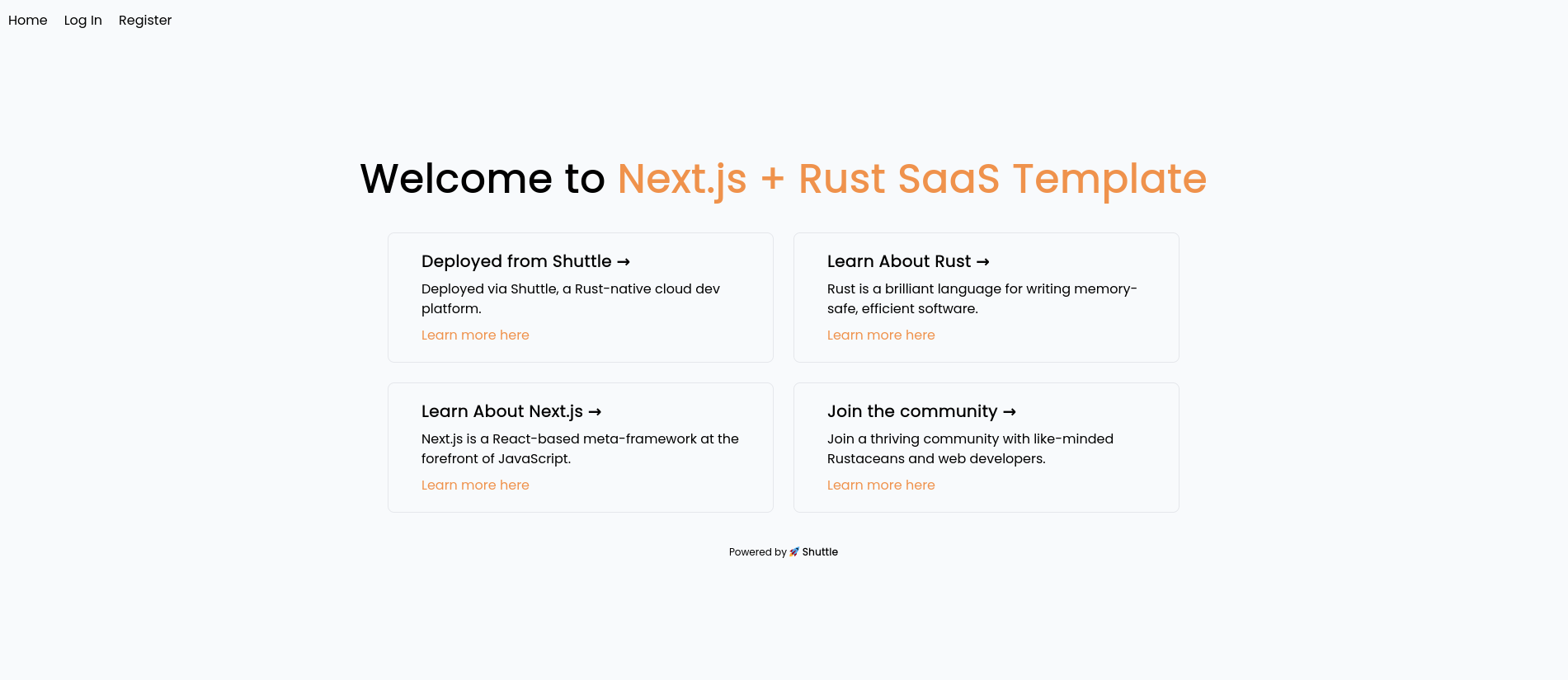This repo is meant to serve as a SaaS template with a Next.js Typescript frontend and a Rust backend. The design of the template internally is based on a sales-oriented Customer Relationship Management (CRM) tool where users will be able to view their customers, sales records as well as some analytics.
- Take subscription payments with Stripe
- Email session-based login
- Mailgun (email subscription, welcome email etc)
- Pre-configured frontend routes for easy transition
- Examples of how to implement simple dashboard analytics
-
Rust
-
Node.js/NPM.
-
Typescript.
- Fork or clone the repo, then navigate to the folder where you cloned the repo:
git clone https://github.com/joshua-mo-143/shuttle-saas-example.git
cd shuttle-saas-example
-
Run
npm ito install the dependencies on the frontend. -
Set your secrets in the Secrets.toml file at the
Cargo.tomllevel of your backend folder (any that are unset will default to "None" to stop the web service from automatically crashing but some services may not work!) -
Run
npm run devand go to http://localhost:8000 once the app has built and you should see the following:
-
If you change the migrations after running locally or deploying, you will need to go into the database itself and delete the tables. You can do this easily with something like psql or pgAdmin.
-
If connecting to external services like Stripe doesn't work, try checking your Secrets.toml file.
-
Shuttle connects by default to port 8000 - if you're currently already using something at port 8000, you can add the
--port <port-number>to thecargo shuttle runcommand to change this.
